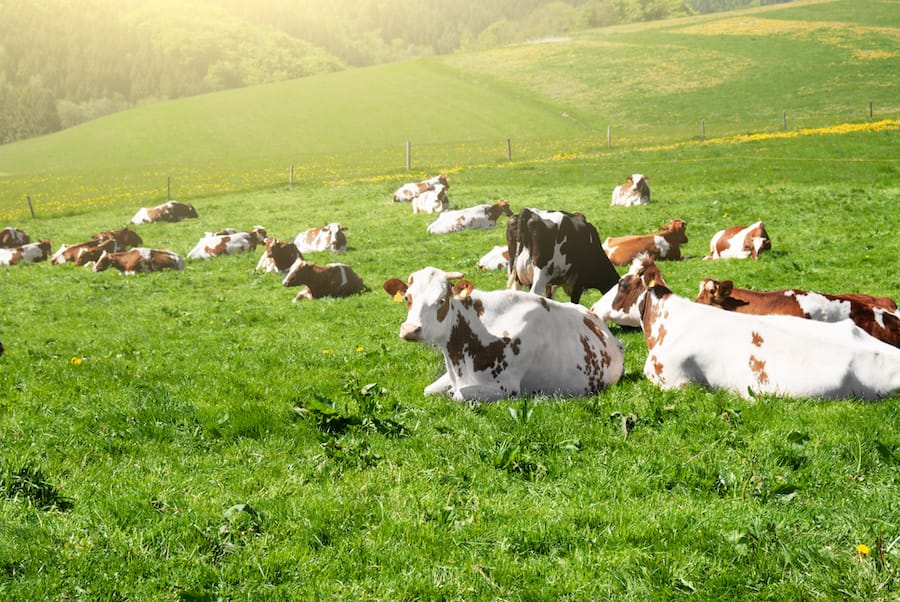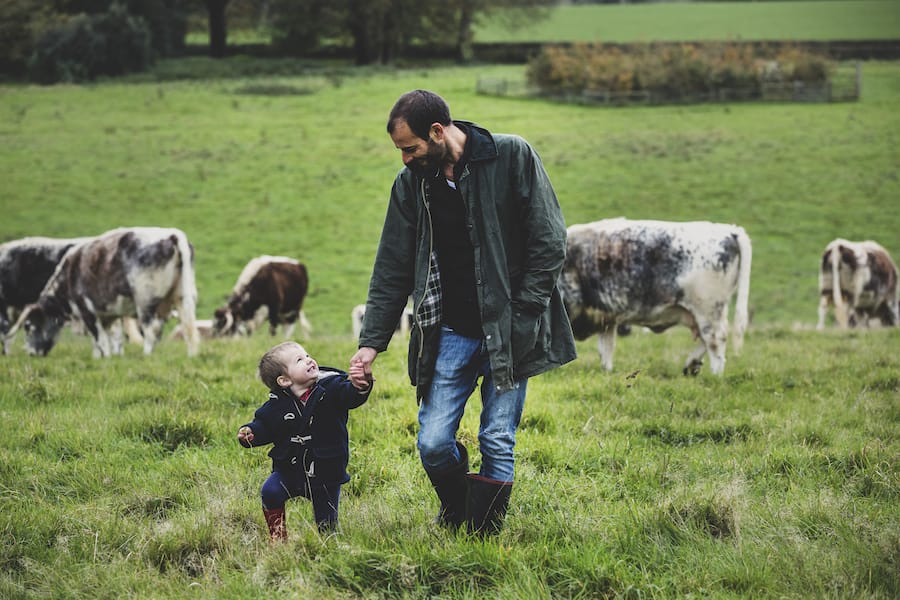I’m sure that in chats with your farmer friends, you’ve discussed all sorts of things.
From grazing in winter, making hay, setting up electric fences, to even cute things your cows did! In one of your chats, rotational grazing and the number of times they move their cows must have come up.
Some farmers move their cows once a day. Others once a year. And some, even 7 times a day!
Now there’s really no one-size-fits-all answer to the question:
‘How often should I rotate my cows?’
It depends on the size of the pasture, the number of paddocks, the size of the herd, etc.
And it doesn’t mean that just because you keep moving your cows like little pawns on a chessboard that your pastures are going to get amazingly lush and your cows are going to produce milk on tap.
Nitty gritty when talkin' rotations
There are usually 3 types of rotational grazing methods that graziers follow:
Rest-rotation:
The concept of rest-rotation was introduced for farmers to rest their pastures for a year. Usually, pastures are rested for as long as two years to fully restore them.
Deferred rotation:
In this pasture system, four to eight pastures with one grazing period per season in each pasture are followed.
Intensively-managed grazing:
As the name suggests, the number of pastures range from five up to even 60 and there is a high concentration of livestock.
Speed up/slow down:
Your pasture rotation will also depend on your grass growth. For example, sometimes, your pasture rotation will need to move fast in a way that your pastures are only top-grazed, to keep up with fast-maturing grasses.
Other times, as the growth of grass, slows down during the summers, you’ll need to slow down your rotational grazing as well.
If your herd is very aggressive and gives your pasture a good thrashing then your pasture recovery period may need to be a little longer.
It’s always important to keep track of all variables on your farm but in rotational grazing, it’s very, very important to keep track of grass growth because that determines where you’re going to rotate your cows.
Pasture.io can give you all the data on the growth of your pasture, in a fuss-free, at-your-fingertips way so that you can seamlessly chalk out your rotational grazing approach based on smart data.
Pasture slices:
The key to rotational grazing is flexibility and a lot of thought.
There’s no tried and tested way to divvy up your pastures as though you’re distributing candy to kids at Halloween. It depends on grass regrowth.
But, you can keep it simple – just use a combination of permanent fences and temporary fences so that you can keep shifting around your paddock perimeters and make rotation small or big depending on your needs.

Some important formulas to keep in mind:
Number of paddocks = (days rested/days grazed) + 1
Example: Number of paddocks needed = 44 days rested divided by 4 days of rest + 1 = 26
Paddock size acres = (DM/head/day x head x days) x DM/acre
The paddock size needed for a herd of 60, 600 kg cows, consuming pasture at 15 kgs DM/head/day, grazing a pasture that yields 590 kgs of grazeable forage DM/a for a 2-day stay would be:
Paddock acres = 15 kgs DM x 60 head x 2 days divided by 590 kgs = 3 acres
Optimum Management:
What is optimum management?
Let’s talk about Apple and their iPhones. There is a saturation point for every phone – the point where the brand feels it’s received maximum revenue from the launch of a particular model and needs to look at switching things up a little and perhaps launching a new phone.
You must have experienced something similar. This is the point where each paddock shift and increase in stock density results in a smaller increase in production than the previous time.
This is called ‘optimum management’ or basically the point where your economic return is at its highest for the effort put in.
Optimum stock density
Is there such a thing?
You guessed it, there isn’t!
Again, there are important variables to consider here like long-term goals, type of soils and forage in the land, herd size, etc. The most effective way to figure this out is to use flexible fences that can be used as a solution to each unique day on the farm.
Let’s talk money
Of course, this conversation has to be had. It’s what it all boils down to really.
One major factor that can help you make a decision is money.
Do the math and calculate how much you’re going to spend on increased labour, water and fencing infrastructure for every rotation.
The increased labour costs alone could limit the cost-effectiveness of the frequency of rotation.
This is because labour costs keep increasing at a linear rate (moving every day will mean double the cost of moving once in two days and so on), while the benefits of increasing your rotation slow down and reach an almost stagnant point after the first 3-4 subdivisions.

When you view this cost in the overall framework of your farm, it has to make sense on the balance sheet and will help you come to a decision more smoothly.
The profitability of your operation will have a huge impact on optimal movement intensity.
You have to take into account different variables like profit per cow, labour cost per day per cow, the percentage increase in forage production and percentage of grazing days and figure out which permutation combination best fits your operation.
The key is to determine when the extra costs exceed the additional benefits for a particular operation as you keep increasing the number of moves.
Now, it really all comes down to you as a farmer.
What do you enjoy doing?
Do you love the economics of plotting out your paddocks, building access to waterways, rotating your cows, overseeing your labour, and don’t mind doing it as often as your farm requires? That’s great!
Or are you the type who can do it only once a month?
Or once every couple of months?
That’s fine too.
If you have 200 cows on 500 acres divided into 50 paddocks, you can choose to graze them one day and rotate, resting each paddock for 19 days, or you could graze for two days and rotate, resting each paddock for 38 days!
It’s not a race to graze as fast as you can and keeping your cows on your toes. It’s about how your soil, your forage and even your cows respond to both situations.
The key would be to test it on a small scale before you go ahead and change up the entire system.
You could always test different rest and graze periods and we at pasture.io can assist you in keeping records meticulously so you’re always on top of all the important variables like pasture growth.
Ok, so, we’re sorry. We tricked you. When you read the topic of the article, you probably thought you would get a straightforward answer like 10 paddocks for 10 acres.
But instead, we just gave you a barrage of information with no real answer.
There is a flip side, though!
As a farmer, you don’t need to feel pressured into ticking off a checklist with a set number of paddocks to cover in a certain time-frame, or get into the ‘race to graze’.
It’s the exact opposite.
The more flexible you are, the faster you’re going to win the rotational grazing game and figure out exactly how many cows in how many paddocks for how many days are going to make it rain profits on your farm.
Consider getting automatic pasture growth measurements to help you do this effectively.
Feel free to reach out to us for any questions you may have on how we can help you take effective grazing decisions.
Until we meet again, Happy Farming!
- The Dedicated Team of Pasture.io, 2020-11-02